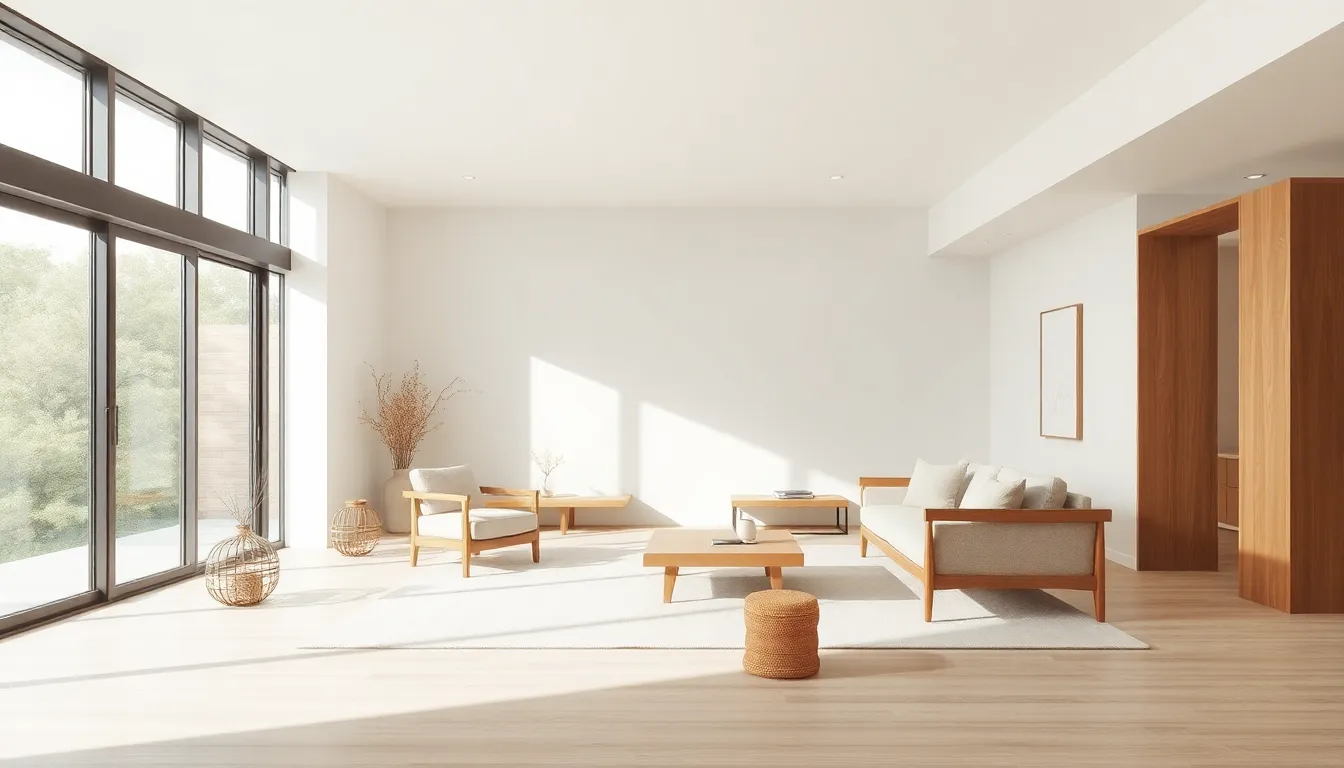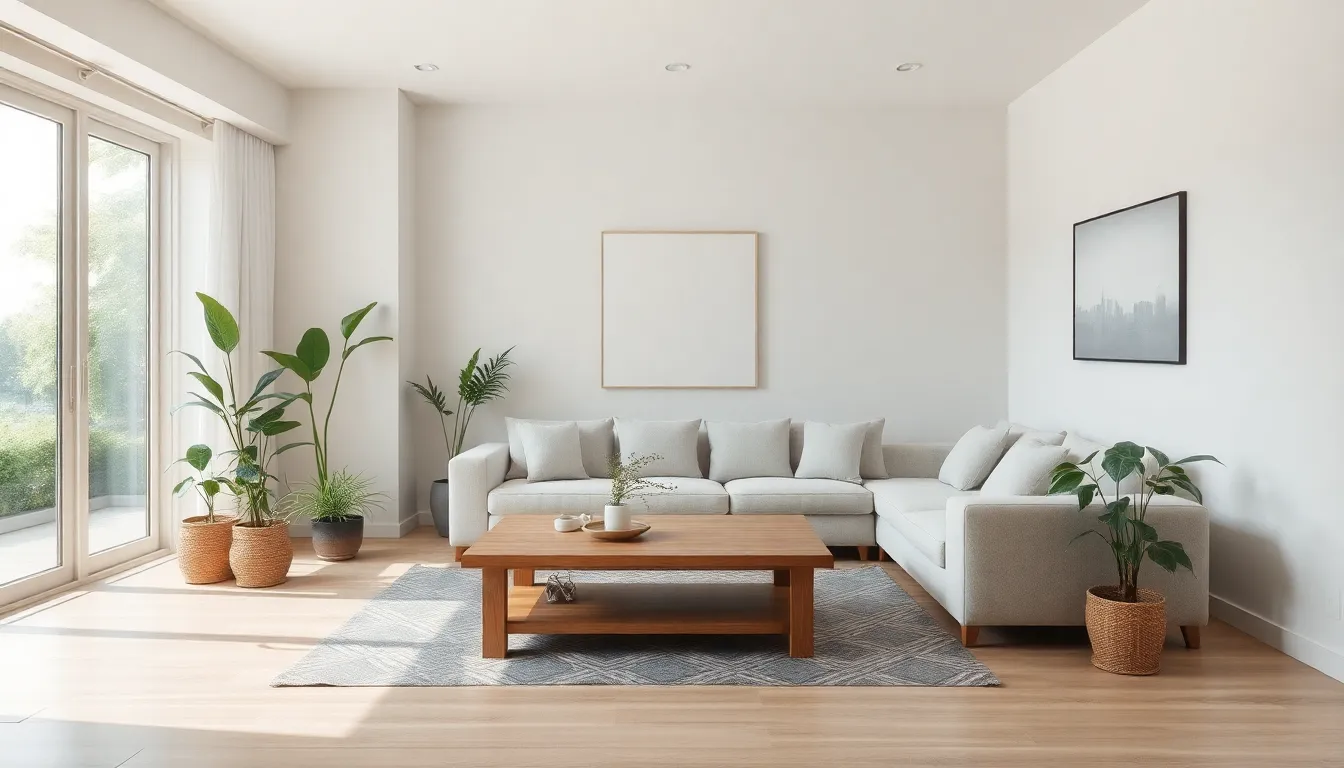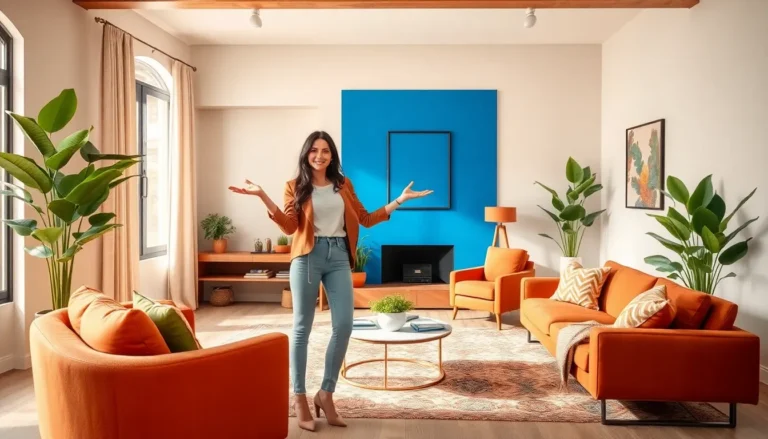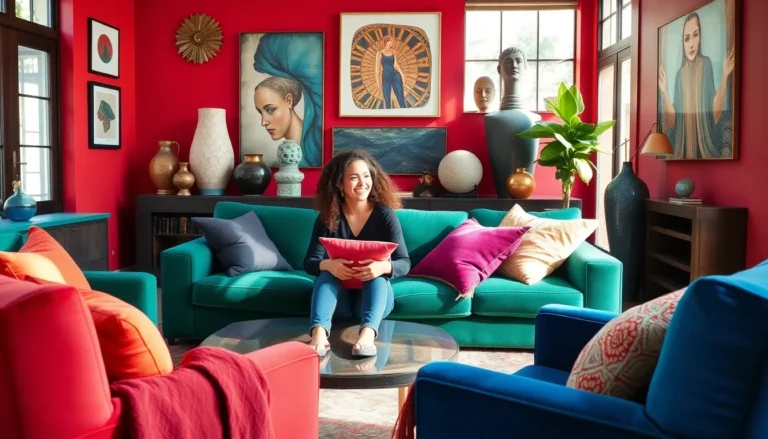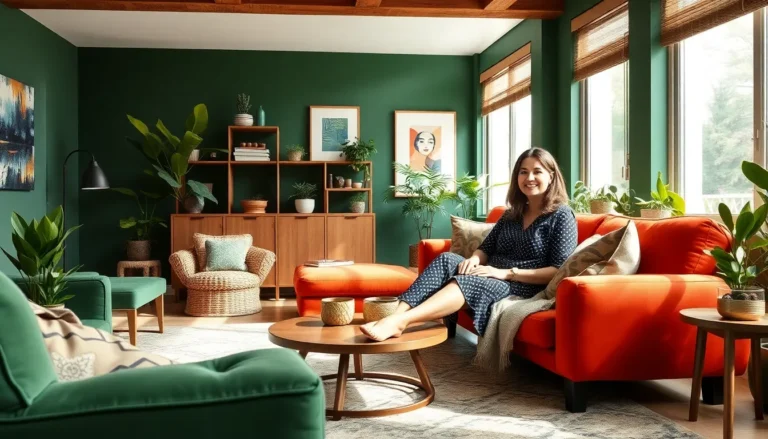Table of Contents
ToggleIn a world overflowing with clutter and chaos, Korean minimalist interiors offer a breath of fresh air. Imagine stepping into a space where simplicity reigns supreme, and every item serves a purpose. It’s like a spa day for your mind, minus the cucumber slices on your eyes. These interiors blend sleek lines with natural elements, creating a serene environment that whispers tranquility.
Overview of Korean Minimalist Interiors
Korean minimalist interiors exemplify a seamless blend of simplicity and functionality. Elements commonly found in these spaces include clean lines, neutral color palettes, and natural materials. Each item serves a specific purpose, promoting a sense of calm and order.
Light plays a crucial role in designing these interiors. Designers often emphasize natural light, which enhances the open feel of spaces. Large windows and unobstructed views allow sunlight to fill the area, creating warmth. Additionally, strategic lighting fixtures highlight architectural details.
Furniture showcases minimalist design principles. Low-profile furnishings and streamlined shapes contribute to the overall aesthetic. Materials like wood, stone, and metal reinforce a connection to nature, adding to the serene environment. Accessories remain limited, ensuring the focus remains on quality over quantity.
Art and decor emphasize cultural elements. Traditional patterns or artifacts subtly integrate heritage into the overall design. These pieces evoke a sense of identity while adhering to minimalist guidelines.
Functionality extends beyond aesthetics. Multi-functional furniture, such as modular storage solutions, maximizes space efficiency while minimizing clutter. This approach prioritizes practicality without sacrificing style.
Sustainability factors heavily into the design philosophy. Many practitioners emphasize eco-friendly materials and energy-efficient practices. This commitment not only supports the environment but also aligns with the tranquil ethos of Korean minimalist interiors.
Overall, Korean minimalist interiors deliver a cohesive and harmonious environment, merging simplicity with intentional design elements.
Key Characteristics
Korean minimalist interiors focus on simplicity and serenity. Each aspect contributes to creating a peaceful environment.
Color Palette
Neutral tones dominate the color palette. Soft whites, gentle beiges, and muted grays serve as the foundation. Accent colors often include subtle pastels that bring warmth without overwhelming the space. Light and airy hues create an open feel, enhancing natural light. This calming palette fosters a sense of tranquility, aligning with the overall aesthetic of minimalism.
Materials and Textures
Natural materials form the backbone of Korean minimalist interiors. Wood, stone, and metal contribute to the organic feel of these spaces. Textures are important, with smooth finishes on furniture and rougher surfaces in decor elements complementing one another. Designers often incorporate textiles like linen or cotton to add softness. These choices reinforce a connection to nature, while promoting sustainability through eco-friendly selections.
Design Principles
Korean minimalist interiors focus on essential elements that create tranquil, functional spaces. Key design principles include functionality, simplicity, and balance.
Functionality
Space efficiency defines functionality in Korean minimalist interiors. Multi-functional furniture pieces maximize utility in limited areas, enabling flexibility. For instance, a sofa can double as a sleeper, while a coffee table may provide storage. Designers carefully select pieces that serve multiple purposes, maintaining order without sacrificing aesthetics. Each item contributes to a clutter-free environment, reinforcing a sense of calm.
Simplicity
Simplicity plays a critical role in achieving the serene atmosphere characteristic of Korean interiors. Clean lines dominate furniture and layout, showcasing understated elegance. Neutral color palettes highlight this simplicity, often combined with subtle pastel accents. Avoiding excessive decoration keeps the focus on essential elements. Moreover, choosing fewer, high-quality accessories emphasizes intentionality, creating an inviting environment.
Balance and Harmony
Creating balance and harmony involves integrating various design elements seamlessly. Natural materials like wood and stone provide texture and warmth, while smooth finishes on furniture add sophistication. Lighting contributes to this balance, as natural light floods spaces through large windows. Designers blend contrasting textures, such as soft textiles against sleek surfaces, fostering a harmonious aesthetic. The thoughtful arrangement of decor ensures visual appeal and calm, enhancing the overall experience of these interiors.
Popular Trends
Korean minimalist interiors embrace trends that prioritize simplicity and functionality. Designers focus on creating serene spaces that enhance the quality of daily life.
Furniture Selection
Furniture selection centers around low-profile designs that maximize space and comfort. Pieces often feature natural materials like wood and metal, reinforcing a connection to nature. Multi-functional items, such as expandable tables and storage solutions, add versatility to small areas. Sleek lines and minimal ornamentation help maintain an uncluttered look, ensuring the environment remains tranquil. This approach emphasizes practicality, creating spaces that serve multiple purposes while avoiding unnecessary distractions.
Decor Elements
Decor elements complement the minimalist philosophy by prioritizing quality over quantity. Accessories remain minimal, often featuring traditional Korean patterns to evoke cultural identity subtly. Textiles such as linen and cotton are used for added warmth and texture. Light fixtures play a vital role in enhancing ambiance and clarity within the space. Natural materials used in decor pieces contribute to an organic feel, with statement items carefully placed to draw attention without overwhelming the atmosphere. This curated approach creates a cohesive feel while maintaining a commitment to serenity.
Conclusion
Korean minimalist interiors offer a unique approach to design that prioritizes tranquility and functionality. With their emphasis on clean lines and natural materials, these spaces create a calming atmosphere that resonates with the principles of simplicity. The thoughtful integration of cultural elements adds depth while maintaining a serene aesthetic.
By focusing on quality over quantity and maximizing space efficiency, these interiors not only enhance daily living but also promote a sustainable lifestyle. As more people seek to create serene environments in their homes, the allure of Korean minimalist design continues to grow, offering a refreshing escape from the chaos of modern life. Embracing this style can lead to a more harmonious and balanced living space.

